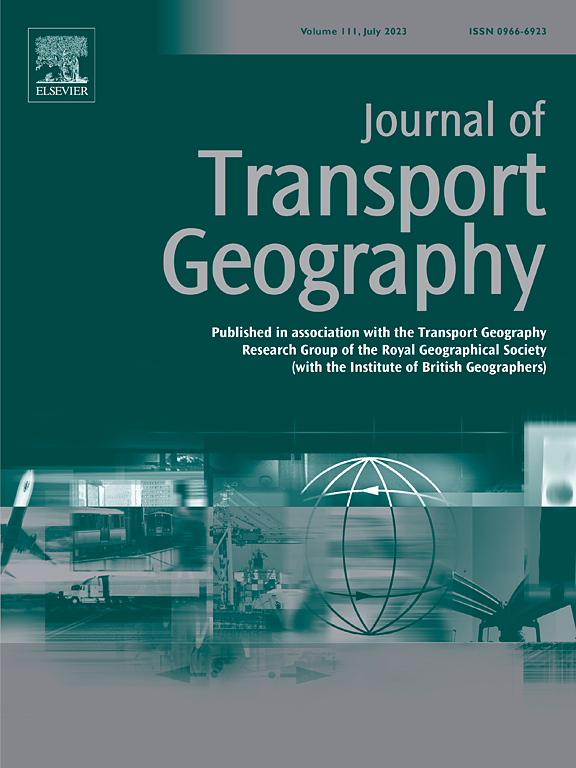揭示多层次行政边界对人口流动的隐性影响
IF 6.3
2区 工程技术
Q1 ECONOMICS
引用次数: 0
摘要
多层次的行政边界对人口流动产生了各种形式的政治和制度影响。然而,缺乏这些影响的定量证据。我们使用中国2844个行政单位的1074.8亿次旅行的手机数据来检验这一点,这是一个经历行政体制重大转变的典型案例。与经典模型相比,包含这些边界的扩展重力模型的精度达到92.75%,调整后的r平方提高了0.23。结果表明,二级(市)行政边界对人口流动的影响是一级(省)行政边界的3.86倍;城市边界在发达地区的效应较强,而省界在区域间的效应相对均衡。市边界与财政收入分权有关,而省边界与财政支出关系更大。行政边界影响社会流动差异,对女性和年轻人口的影响更大。这些发现有助于制定更准确的交通模型和合理的交通管理政策。本文章由计算机程序翻译,如有差异,请以英文原文为准。
Unveiling the hidden effects of multilevel administrative boundaries on human mobility
Multilevel administrative boundaries create various forms of political and institutional influences on human mobility. However, quantitative evidence for these influences are absent. We examine this using mobile phone data of 107.48 billion trips across 2844 administrative units in China, a typical case experiencing significant transitions in administrative system. An extended gravity model, incorporating these boundaries, achieved 92.75 % precision and 0.23 improvement in adjusted R-squared over the classic model. Results show second-level (municipal) administrative boundaries impact mobility 3.86 times more than first-level (provincial) administrative boundaries on average. Municipal boundaries exert stronger effects in developed areas, while provincial boundaries show relatively balanced effects across regions. Municipal boundaries are linked to fiscal revenue decentralization, while provincial boundaries relate more to fiscal expenditure. Administrative boundaries influence social differentiation in mobility, with a stronger effect on females and younger populations. These findings contribute to the development of more accurate transportation models and reasonable mobility-management policies.
求助全文
通过发布文献求助,成功后即可免费获取论文全文。
去求助
来源期刊

Journal of Transport Geography
Multiple-
CiteScore
11.50
自引率
11.50%
发文量
197
期刊介绍:
A major resurgence has occurred in transport geography in the wake of political and policy changes, huge transport infrastructure projects and responses to urban traffic congestion. The Journal of Transport Geography provides a central focus for developments in this rapidly expanding sub-discipline.
 求助内容:
求助内容: 应助结果提醒方式:
应助结果提醒方式:


